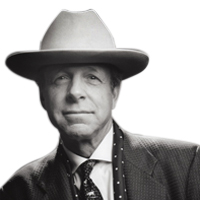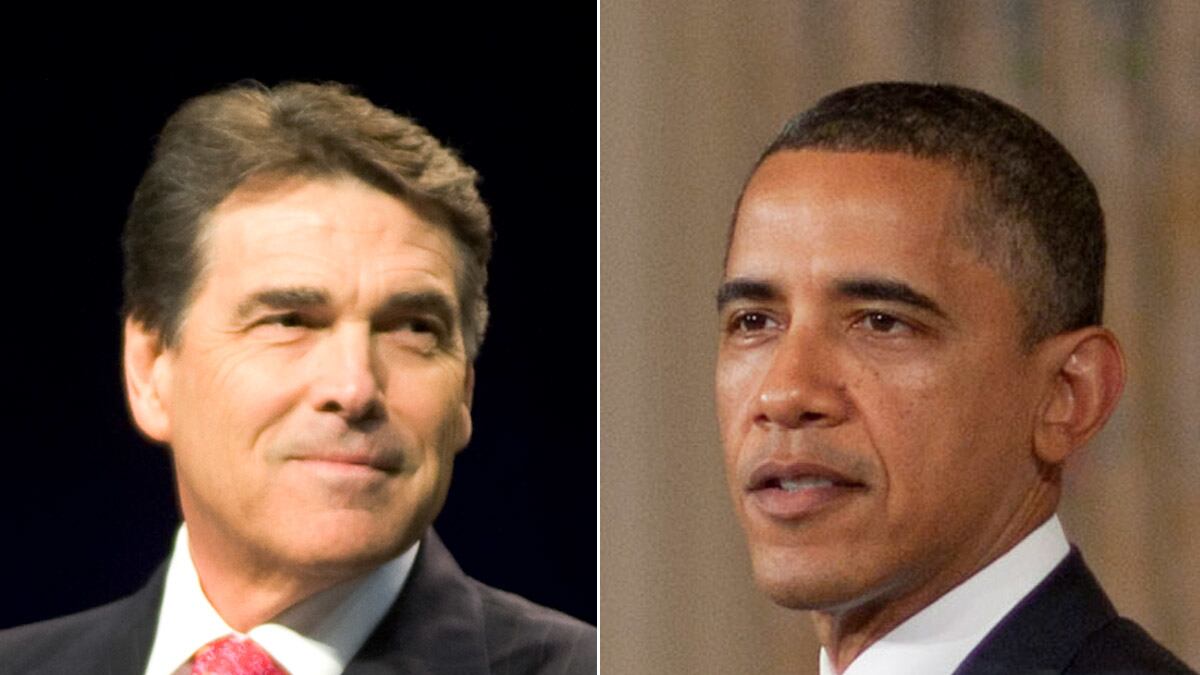Three political events occurred this week that are all about intensity: the Wisconsin recall elections, the GOP debates, and Rick Perry's presidential announcement.
Voter turnout was high in Wisconsin on Tuesday, with Republicans retaining four of the contested six seats to retain their majority in the state Senate. While special legislative elections typically don’t draw as many voters as regular elections, about 44 percent of voting-age adults turned out, and in one county the total vote exceeded the governor’s race last fall.
Not surprising. Intensity drives turnout. And as Wisconsin goes, so goes the nation: the 2012 presidential election will be all about intensity.
Candidate Barack Obama benefited from intensity—a high positive intensity for himself and negative intensity for the opposing party in 2008, thanks in part to “Bush fatigue.” With no incumbent on the ballot, voter turnout was up in the general election: 61.6 percent of the voting-eligible population cast a vote, up from 2004 and well over the average of 55.2 percent in the presidential elections from 1980 to 2004.
Intensity is a mix of emotional and cognitive responses. Team Obama was masterful at marketing in 2008, connecting his brand to the emotional needs and aspirations of a broad cross-section of voters. The emotional intensity caused regular folks to faint and the media to swoon.
But now, with far more folks registering strong disapproval than strong approval of the president, an approval gap of -22 as measured by Rasmussen among likely voters, the presidential election this time around will be more about negative intensity—President Obama’s.
Marketers know—no matter how deep the emotional connection or brand loyalty—when a product does not perform, rational thought overtakes emotion, and most consumers make a new choice. With the continuing economic uncertainty and high unemployment, voter frustration isn’t going away. And intensity for the Obama brand is waning because the brand is not delivering the promised results. Once passionate followers are experiencing cognitive dissonance.

The president’s team is going to learn it’s easier to launch a new brand than revive a damaged one. (This is the same rough road faced by Sarah Palin if she enters the race.)
Voter intensity and party turnout in 2012 may look more like the last midterm elections than the last presidential election. Although many races in 2010 were about positive intensity for the candidate, the overall pattern was strongly influenced by negative intensity. The record Republican wave was a referendum on and rejection of the policies of the president and his party. In looking just at data from Texas as tracked by pollster Mike Baselice, 48 percent of Democratic voters identified themselves at a high of 10 in their intensity to vote. But so too did 59 percent of Republican voters. And of those voters most closely identifying with the Tea Party movement, a whopping 83 percent were at a 10 in intensity. That intensity difference drove disproportionately more Republican voters to the polls. As a result, Democrats lost 22 seats in the Texas House.
Obama’s reelection campaign runs three risks: losing voters to the other party, losing voters to apathy, and losing the election because of the growing negative intensity against Obama that will drive Republican turnout.
But that doesn’t clear all the hurdles for Republicans. Although the outcome of the GOP primary will likely be determined by positive intensity for the candidates, voters are much more wary and still divided. Who will drive more of the Tea Party, establishment, and moderate voters to the polls?
According to Gallup, prior to Thursday’s debate in Ames, Iowa, the leaders in positive intensity among the already-declared Republican candidates were Herman Cain and Rep. Michele Bachmann, followed by Mitt Romney, Rep. Ron Paul, Tim Pawlenty, and Jon Huntsman.
Although moments of intensity were the highlights of the GOP debate, candidates like Cain and Bachmann inspire more emotional intensity—but that may not be enough to reach critical mass if voters rationally judge their experience to be lacking. Bachmann’s experience is primarily legislative, not executive; Cain’s is private sector, not government. Romney, Paul, and Pawlenty connect more cognitively—but that may not be enough if they don’t appeal to enough voters emotionally. So far, they haven’t. And on a full shelf that also includes Newt Gingrich—the most forceful voice in the debate—Gary Johnson, Rep. Thad McCotter, Buddy Roemer, and Rick Santorum, the underwhelming packaging and performance of Jon Huntsman is not enough to attract the right interest.
But the big enchilada, announcing his run for president Saturday in South Carolina, is the real threat with both barrels loaded in the primary and the general. The longest-serving governor in the nation, and in Texas’ history, Rick Perry has crossover appeal to both fiscal and social conservatives. His positive intensity scores are the highest of any Republican tested, including Mitt Romney, the frontrunner as targeted by Team Obama.
This Eagle Scout, U.S. Air Force C-130 pilot, Second and 10th Amendment advocate, and son of cotton farmers hits emotional triggers with his unapologetic belief in individual liberty and self-determination. And Perry will appeal to many concerned about our fiscal picture with his unmatched track record stewarding an economy (inherited from George W. Bush), helping create 40 percent of the net new jobs in the nation over the last two years alone, and expanding the state’s economy to the second largest in the nation while balancing the budget and not increasing taxes—proving he can deliver on his promises.
But will Perry’s positive intensity survive the onslaught of attacks to come, from the middle and the left and the media? Until he jumps in with both feet (in boots named “Liberty” and “Freedom”), the real battle of the brands has not yet even begun.
Perry has his faults, which will be exposed over the course of the campaign. He’s far too conservative and hard for my taste. But as a political observer looking at the current environment, I know that intensity counts for a lot. And Perry’s got a lot of heat.





